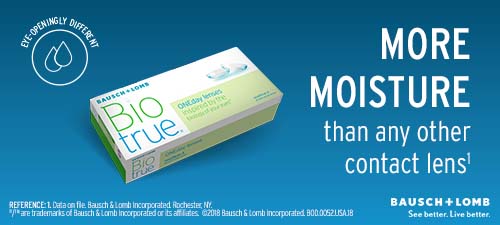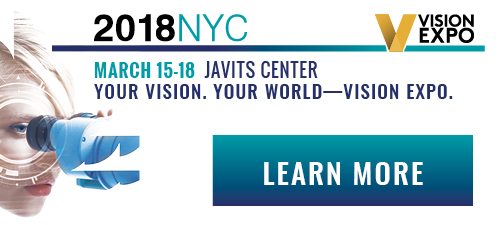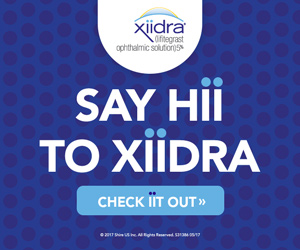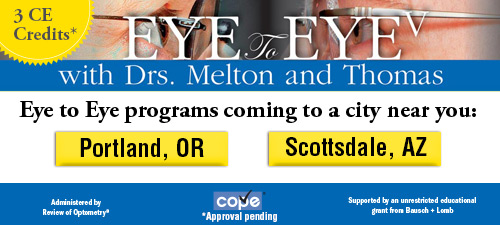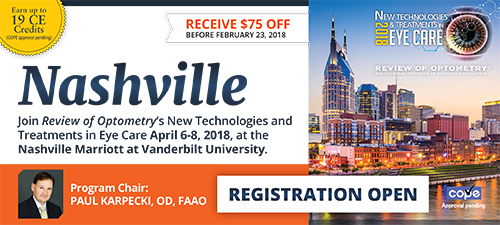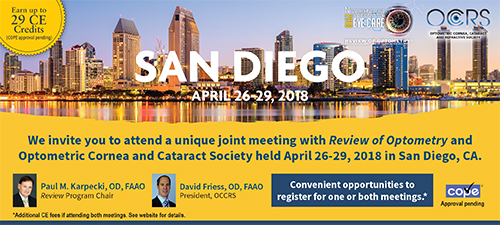
A
weekly e-journal by Art Epstein, OD, FAAO
Off the Cuff: The Sunshine Act: Misguided Dysfunctional Government Absurdity
Now that we’re nearing the five-year mark since the inception of the Sunshine Act, I thought it time to examine its impact on health care providers and health care in general. Introduced by CMS in 2013 as part of the Affordable Care Act, the intent of the Sunshine Act—reducing potential conflicts by increasing transparency regarding financial relationships between doctors and industry—was laudable. However, realistic examination of this bureaucratic boondoggle shows that it has been ineffective, needlessly costly and even damaging to health care.
|
|||||
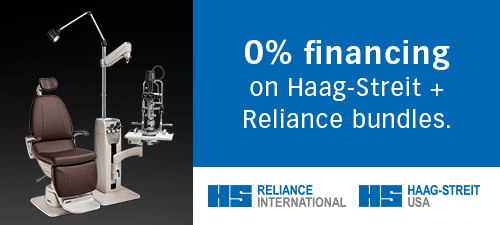
|
||
| Trends in Contact Prescribing in Japan (2003-2016) | ||||
An annual survey of contact lens prescribing trends was conducted each year between 2003 and 2016. Japanese ophthalmologists were asked to provide information relating to 10 consecutive contact lens fittings between January and March every year. Over the 14 years of the annual survey, data from a total of 64,122 contact lens fits were returned by ophthalmologists. The mean age (±SD) of lens wearers was 30 ± 13 years, and 68% were female. The proportion of rigid lens fits decreased over time—from 35.4% in 2003 to 14.7% in 2016. Across this period, daily disposable lens fits increased, representing 46% in 2016. The proportion of toric lenses and multifocal lenses gradually increased, from 6.6% and 1.9% to 12.3% and 5.8%, respectively. Silicone hydrogel material use grew from 0% to 43.2%, while mid- and low-water content lens materials declined from 54.1% and 28.2%, to 36.1% and 8.3%, respectively. Multi-purpose lens care solutions dominated the market over the 14 year survey period. This survey revealed prescribing trends and preferences in Japan over the past 14 years, with the main changes observed being a decrease in rigid lens use and an increase in the use of silicone hydrogel materials and daily disposable lenses. |
||||
SOURCE: Itoi M, Itoi M, Efron N, et al. Trends in contact prescribing in Japan (2003-2016). Cont Lens Anterior Eye. 2018; Feb 26. [Epub ahead of print]. |
||||
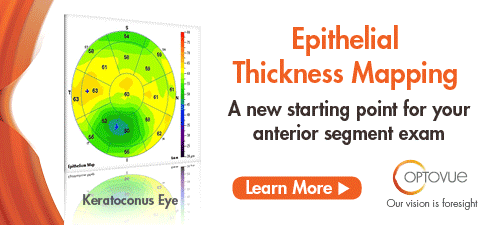
|
||
| Evaluation of the Safety and Efficacy of Therapeutic Bandage Contact Lenses on Post-cataract Surgery Patients | ||||
A total of 40 participants were recruited and randomly divided into two groups to evaluate the safety of therapeutic bandage contact lenses for post-cataract surgery patients and to illustrate their efficacy on postoperative comfort and tear-film stability. Group one was instructed to wear bandage contact lenses for a week and use antibiotic eye drops for a month starting the first day after surgery. Group two received subconjunctival injection of tobramycin and was asked to wear eye pads on the first day after surgery and then use antibiotic eye drops, as the first group did.
Ocular surface disease index (OSDI) questionnaire, slit-lamp microscope examination of tear break-up time (TBUT), corneal fluorescein score (CFS), tear meniscus height (TMH) together with anterior segment optical coherence tomography (AS-OCT) and corneal topography were evaluated preoperatively and postoperatively. The subjective feeling, TBUT and TMH post-surgery improved in patients who used bandage contact lenses compared with those who did not at one week post-surgery. Until three month postoperatively, the comfort degree and TMH of group two were still worse than group one. Moreover, the TBUT and CFS of the group with eye pads got worse, whereas the group with bandage contact lenses recovered to normal. None of these patients had infections or other complications. Wearing therapeutic bandage contact lenses after cataract surgery compared with traditional eye-pads was shown to be a safe method to improve tear-film stability and reduce postoperative discomfort without hindering corneal incision recovery. |
||||
SOURCE: Shi DN, Song H, Ding T, et al. Evaluation of the safety and efficacy of therapeutic bandage contact lenses on post-cataract surgery patients. Int J Ophthalmol. 2018;11(2):230-4. |
||||
|
|||
| Foveal Light and Dark Adaptation in Patients with Glaucoma and Healthy Subjects: a Case-control Study | ||||
This case-control study included 23 glaucoma patients and 51 controls to evaluate dark adaptation in glaucoma patients. Light and dark adaptation were measured twice after 10 minutes pre-adaptation to 0.0032 cd/m2; the background luminance increased stepwise to 320 (5 log unit step) or 10,000 cd/m2 (6.5 log unit step) for 10 minutes, then it decreased back to 0.0032 cd/m2 for 30 minutes. Foveal contrast sensitivity [CS]) as a function of time was determined using a 1.15 degree increment. Time resolution of the experiments was 30 seconds. Multiple linear regression was used to analyze the effect of glaucoma on the CS plateau and adaptation time (time to reach the plateau minus 3 dB); analyses were adjusted for age and gender.
After light adaptation to 320 and 10,000 cd/m2, glaucoma patients had 0.22 and 0.13 log units lower CS plateau than controls, respectively. After dark adaptation, these differences was 0.21 and 0.30 log units, respectively. Light adaptation occurred too fast to determine an accurate light adaptation time. Dark adaptation times of glaucoma patients and controls were similar, for both the 5 (7.2 vs. 5.5 minutes) and the 6.5 (18.2 versus 16.6 minutes) log unit steps. After a sudden increase or decrease in luminance, the logCS adaptation curves of glaucoma patients were shifted downwards compared with the curves of healthy subjects. Glaucoma patients had a lower CS plateau than healthy subjects, for both light and dark adaptation; dark adaptation times were similar. |
||||
SOURCE: Bierings RAJM, Kuiper M, van Berkel CM, et al. Foveal light and dark adaptation in patients with glaucoma and healthy subjects: A case-control study. PLoS One. 2018;13(3):e0193663. |
||||
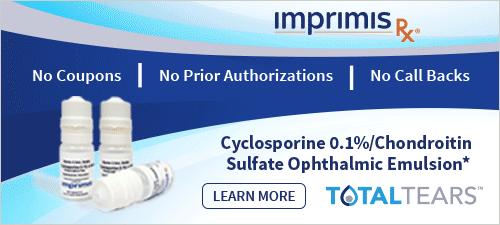
|
||
| News & Notes | |||||||||||||||
| SightLife to Acquire Kamra Inlay for New Refractive Cornea Division AcuFocus and SightLife Surgical agreed to terms for the acquisition of the AcuFocus Kamra inlay. The terms of the agreement were not disclosed. The corneal inlay globally was the first to receive approval from the U.S. Food and Drug Administration for the surgical correction of presbyopia. The deal is expected to close at the end of the first quarter of this year, with full transition of services and support to follow shortly thereafter. To ensure seamless transition and uninterrupted customer support, a core team from AcuFocus will join SightLife Surgical. Read more.
|
|||||||||||||||
| Johnson & Johnson Vision Introduces Digital Platform Johnson & Johnson Vision announced the U.S. launch of a digital platform that delivers online learning, patient education materials, practice resources and connected commerce aimed at streamlining and simplifying the online experience for eye care professionals. Many ECPs currently engage with multiple online sites to do business with a single company, which can be burdensome to a practice and take away from valuable time with patients. Read more.
|
|||||||||||||||
| Imprimis Launches Custom Compounded Ophthalmic Formulations Imprimis Pharmaceuticals introduced a program to provide ophthalmologists and optometrists with custom compounded ophthalmic medications that are increasingly difficult to find and typically needed on an urgent basis. The goal is to provide high-quality compounded medications from an Imprimis FDA-inspected facility and ship it within 24 to 48 hours. The company intends to make this program available in all 50 US states. Physicians can order custom compounded formulations on an as needed basis for their patients. Read more. |
|||||||||||||||
| X-Cel Specialty Contacts Introduces ToriColors Contact Lens X-Cel Specialty Contacts announced expansion of its product line with the ToriColors Comfort Cosmetic Lens—an opaque, disposable toric contact lens. ToriColors is the outcome of a partnership between Ireland-based PolyDev, with expertise in the design and production of cosmetic contact lenses, and X-Cel Specialty Contacts, which manufactures specialty disposable, custom soft and gas permeable contact lenses. Read more. |
|||||||||||||||
| Metrovision Enters U.S. Market Metrovision entered the U.S. market with the MonCvONE line of clinical research perimeters. As well as routine features, it offers Goldmann perimetry; the ability to measure at photopic, mesopic and scotopic levels; pupillometry and binocular synchronized video imaging. Metrovision also announced an agreement with SRD Vision to represent the company. Read more. |
|||||||||||||||
|
|||||||||||||||
|
|||||||||||||||
|
Optometric Physician™ (OP) newsletter is owned and published by Dr. Arthur Epstein. It is distributed by the Review Group, a Division of Jobson Medical Information LLC (JMI), 11 Campus Boulevard, Newtown Square, PA 19073. HOW TO ADVERTISE |


